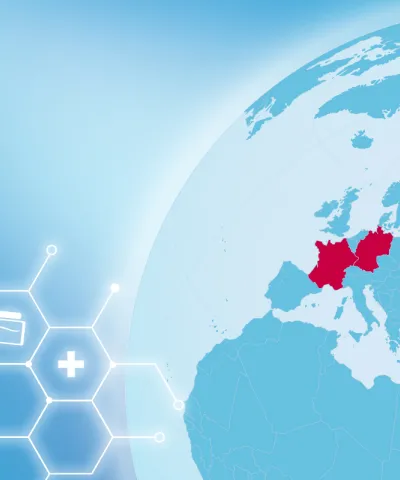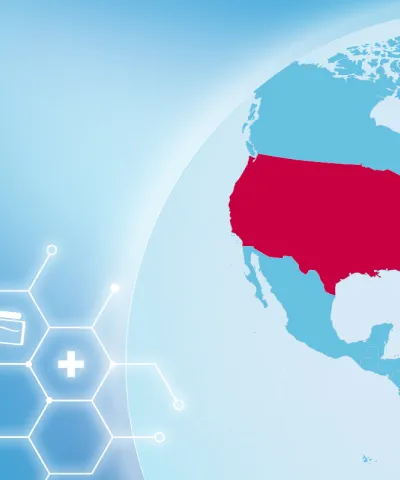Explore the key implications of the 2024 LFSS and CEPS report on the French pharmaceutical pricing and market access environment. Discover what it means for the industry.
Both the 2024 LFSS (annual Social Security Financing Law) and the belated CEPS annual activity report for 2022 were published in January 2024, providing insights into the changing French P&MA environment.
Here are the key implications from both reports on the French P&MA market.
How does the 2024 LFSS impact pricing and market access for drugs?
Increased target for healthcare expenditures
- The annual healthcare spending target (ONDAM) has increased to 254.9 billion euros, representing a growth of 3.2 percent compared to 2023. Additionally, the pharmaceutical spending target (“montant M” or safeguard clause triggering clawback payment) has grown by 6 percent compared to 2023 , reaching €26.4 billion.
Changes to non-conventional access programs
- The LFSS 2024 introduces an exceptional temporary funding mechanism called “post EAP” for drugs transitioning from Early Access Programs (EAP), that do not currently meet the eligibility criteria for the T2A exclusion list (pass-through funding for expensive hospital drugs), and commit to generating additional data. The funding mechanism post-EAP will look like the EAP mechanism (i.e., annual rebate and final rebate “remise de débouclage”). Further details of this mechanism (e.g., eligibility criteria, maximum duration, expected discount level vs. EAP price) will be clarified by decree.
- Provided standard eligibility criteria are met, EAP authorizations will now only be granted if the manufacturer commits to continuous and sufficient supply to the French market. A forthcoming decree is expected to outline penalties for non-compliance with this new requirement.
- Further measures include adjusting EAP vaccine criteria and enabling the regulatory body ANSM to grant compassionate access in situations where EAP is denied by the Transparency Commission due to perceived lack of innovation, offering another access opportunity.
Strengthening measures against drug shortages
- With an intensified focus on fighting drug shortages, LFSS 2024 mandates stricter supply chain responsibilities for pharmaceutical companies. The goal is to minimize supply disruptions through stronger regulatory measures and potential penalties for non-compliance.
Additional key provisions
- The LFSS 2024 will modify the purchasing and funding process for contrast agents. This enables pharmacists to dispense certain medications without a prescription, with the list of drugs and further details finalized in an upcoming decree. Other measures include broadening biosimilar substitution policies, implementing a protocol to ensure the relevance of prescriptions for costly or high risk drugs, and adjusting the calculation method for the “M” contribution.
What are the most important insights from the 2022 CEPS activity report?
Continuous increase in total drug rebate payments
- The CEPS report for 2022 shows a notable 26 percent increase in drug rebate payments compared to 2021, largely driven by antineoplastic agents. We see a preference from CEPS for simple discount agreements among all contract types, representing two-thirds of the total contract amount. The overall list to net average spread across the top 10 drug classes has been somewhat stable at 25 percent for 170 products in 2022 vs. 23 percent for 169 products in 2021. However, major variations exist both across and within classes.
Increase in drug expenditures outside of conventional reimbursement pathway
- Drugs available through non-conventional access programs, including early access and compassionate access, saw a significant increase in sales (+60.6 percent, €764 million in 2022 vs. €360 million in 2021). This leap is driven, again, mainly by new antineoplastic products.
CEPS exceeds drug price cut target
- In 2022, CEPS saved €842 million on drug costs, surpassing the €825 million target set in the LFSS. This was mainly due to price cuts applied to drugs nearing loss of exclusivity and/or facing generics and biosimilars entry under articles 24 and 25 of the framework agreement.
All-time record clawback
- The 2022 activation of the “montant M” safeguard clause, due to pharmaceutical sales exceeding the €24.5 billion threshold set in 2022 LFSS, resulted in a record €1.429 billion clawback payment for the industry.
Description of security of supply considerations in price setting decisions
- The activity report provides details on how the new criteria pertaining to the security of supply for the French market (as per Article 65 of LFSS 2022) have been integrated into net price negotiations. It specifically outlines methods for assessing the level of supply security and the associated net price premium.
Limited appetite for the fast-track process
- In 2022, only three applications were submitted for the simplified and accelerated fast-track program introduced in the 2015 framework agreement , highlighting its limited success. The complexity of price calculations prevented one application from benefiting from the expedited price negotiations timelines.
Increase in litigations between manufacturers and CEPS
- There was a 30 percent increase in contentious appeals by the pharmaceutical sector (13 in 2022 vs. 10 in 2021) against CEPS pricing decisions. This marked a good success rate of 54 percent vs. 44 percent in 2021 for pharmaceutical companies. Such outcomes show that a solid understanding of the regulatory framework must support the development of a successful pricing strategy.
Conclusion
The complex environment and budget pressures highlighted through these reports underscore the critical need for pharmaceutical companies to adopt a dual strategy:
- Retrospective analysis, leveraging insights from the CEPS report and negotiation precedents, is vital for a deep understanding of the evolving P&MA landscape. This enables effective navigation of challenges and anticipation of negotiations.
- At the same time, maintaining a prospective stance is essential. staying informed about upcoming decrees and legislative updates in the LFSS ensures adaptability and strategic alignment with France's healthcare system dynamics.
Reach out to us today. You can speak directly to our team of experts in Simon-Kucher to discuss these updates in more detail.
Trending Topic
Better Market Access
The role of better market access is to remove any hurdle that prevents or hinders patients from receiving available treatments. In the right place, and at the right time.
Today, the impact of market access spans clinical development, regional commercial activities, patient engagement, and post-launch compliance. Yet, for many pharmaceutical companies, planning for commercialization only truly begins when a drug has been submitted for approval — far too late in the process.
Get to know our insights on local trends, regional and global developments and global to local excellence.
With contributions from Benoit Brocard, Brice Lavabre, Marilyn Sarkis, and Gaia Vialette.




